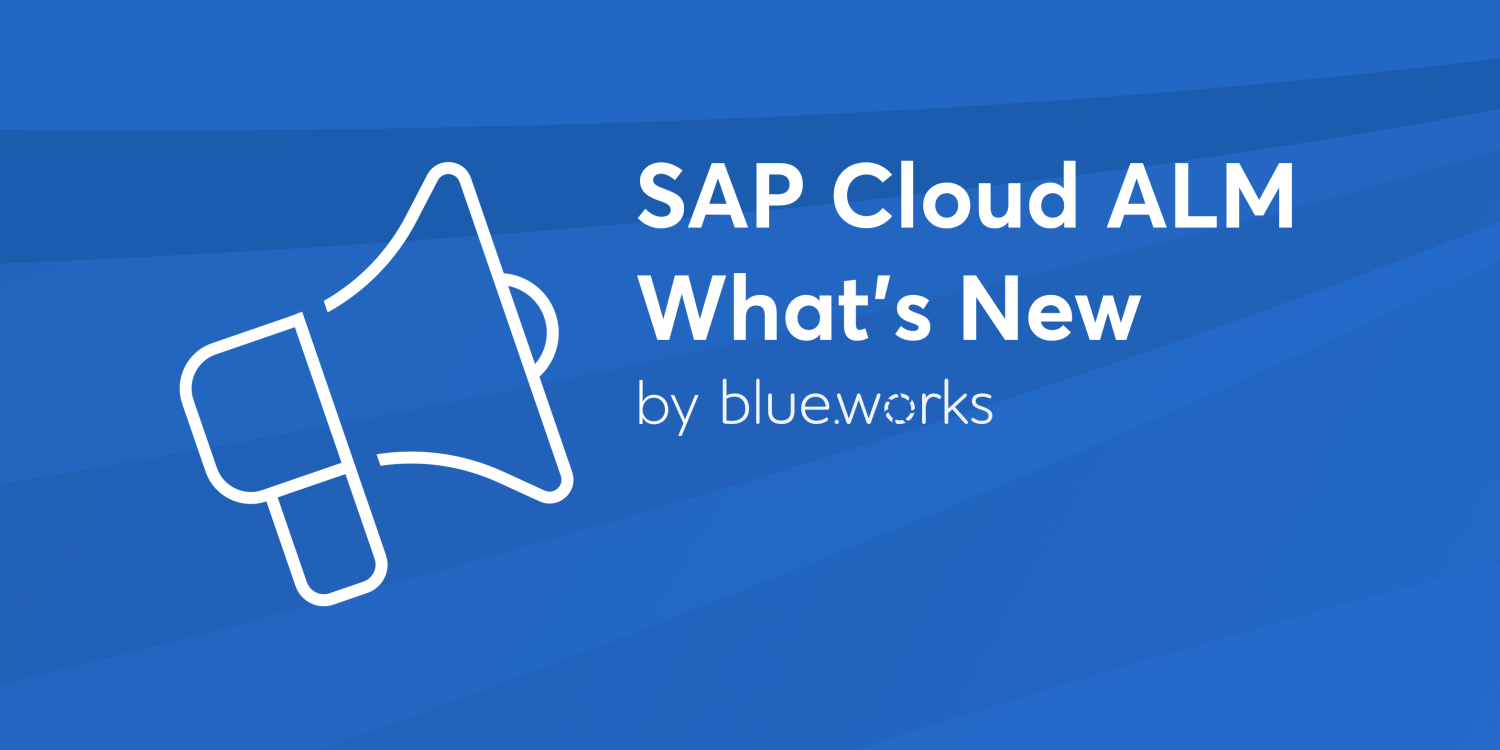
SAP Cloud ALM – What’s New in Week 24
Welcome to our SAP Cloud ALM update series! Every two weeks, SAP rolls out new enhancements to Cloud ALM, providing users with the latest features, performance improvements, and user interface upgrades. In this post, we’ll dive into the most recent updates released this week. If you missed our article on the latest updates, you can read it here.
SAP Business Transformation Center
Scoping area has two new features.
Transition readiness has been enhanced with additional checks in the Manage Digital Blueprints app. The system now verifies the presence of SAP Industry Solution data in the SAP ECC source system, ensuring everything is in place. It also checks that the SAP Basis release is 740 or higher, making sure all requirements are met for a successful data migration process.

Additionally, in the Select Scanned Tables app, key fields identified for the scanned tables are now easily viewable. This update simplifies workflows by providing clear visibility into the essential data elements.
Implementation
The Analytics application has two new updates to streamline defect tracking and test execution analysis.
The Defects Reporting now features a Defects Distribution tab. This new tab allows displaying defects distribution by Scope, Workstream, and Priority, providing a clearer view of where defects are concentrated.

The Test Execution Analysis app has introduced a Tester filter. This filter helps refine the content displayed in the Execution by Statuses, Executed Manual Test Actions, and Test Execution Distribution tabs, making it easier to focus on specific testers activities.

The Cross-Project Analysis application also now includes a Tester filter. The Test Execution chart and Test Execution by Project table respond to this filter, offering a more focused analysis of test execution data across projects.

In the Features app, a new status called Successfully Tested is now available. This status provides a more granular view of feature testing progress.
Overview application has received two updates.
The Defects card has a new design. Users can filter defects by Scope, Workstream, and Priority, and the header now links to the new Defects Distribution app.

The Test Execution and Failed Manual Test Runs cards now react to the Assigned To filter. These cards will respond to the “Me” selection but will not react to “My Roles.”

The Process Authoring application has two updates.
Users can now assign process hierarchy nodes to a custom solution process. By navigating through the Relations tab section and using the Edit button, users can Assign new process hierarchy nodes or unassign existing ones. Once the custom solution process is activated, these assignments are also visible in Process Management.

A Mass Deletion feature for unused elements is now available. Users can select all items in a list using a new Select All checkbox, allowing for the mass deletion of items by element type. If more than 1000 unused elements are present, users can scroll down and choose More before selecting the Select All checkbox.

Processes has four new updates.
Users can now assign a Process Owner to a solution process in the Status and Planning section on the General Information tab. This attribute is editable if the solution process is in scope and retains its value even if the process is later removed from scope.

A new Icon indicates process hierarchy nodes that originate from Process Authoring. These nodes are shown next to a specific icon, making it easy to identify their source. Note that these nodes cannot be unassigned.
New supported solution scenarios have been added. The SAP SuccessFactors Talent Intelligence Hub and SAP SuccessFactors Employee Central are now available. The SAP SuccessFactors Employee Central replaces several obsolete scenarios:
- SAP SuccessFactors MHR-20 HR Administration
- SAP SuccessFactors MHR-40 Benefits
- SAP SuccessFactors MHR-10 Organizational Management
- SAP SuccessFactors MHR-30 Time and Attendance Management
- SAP Best Practices for SAP SuccessFactors Employee Central
- SAP Best Practices for SAP SuccessFactors Time Tracking
As part of the Notes to Documents migration, the Documents app now offers feature parity with the Notes application and additional capabilities. Consequently, the Note creation option has been removed from the solution process object page and the context menu from the Solution Value Flow diagram.

In the Projects and Setup application, users can now view external integration information. This information is displayed under Integration Scenario in the detail view of a project.

The Tasks now features a new Quality Gates tile. From the SAP Cloud ALM launchpad, users can directly navigate to a view showing all quality gates in a project, eliminating the need to filter and modify the task list to view relevant details.

Operations
Integration & Exception Monitoring application has four new updates to enhance functionality.
W3C Trace Context Information in Technical Correlation is now available. This feature allows viewing the W3C Trace Context information of messages in the Message Details. The W3C trace context information is also used to correlate messages and exceptions for Related Messages and Exceptions.
Monitoring for SAP Ariba Procurement Planning has been added. This update enables monitoring messages for SAP Ariba Procurement Planning, providing a detailed status overview of incoming and outgoing messages. Users can drill down to individual messages to check specific issues and message details.
The Download Function in the Category View and the Tracking page has been enhanced. Now, the download process happens in the background, allowing continued use of the application while messages download. Additionally, the download limit has increased from 10,000 to 100,000 entries.

There is also an enhancement to Data Volume Information. Users can now view a detailed breakdown of the memory used for storing exceptions in the Configuration, Data Volume section. By choosing Details next to the Memory Used by Exceptions information, the Messages Used by Exceptions table is displayed, listing the managed component name, service type, memory consumed by each category (in size and percentage), and the number of records. The table entries can be refined using filter, search, and sort options.
